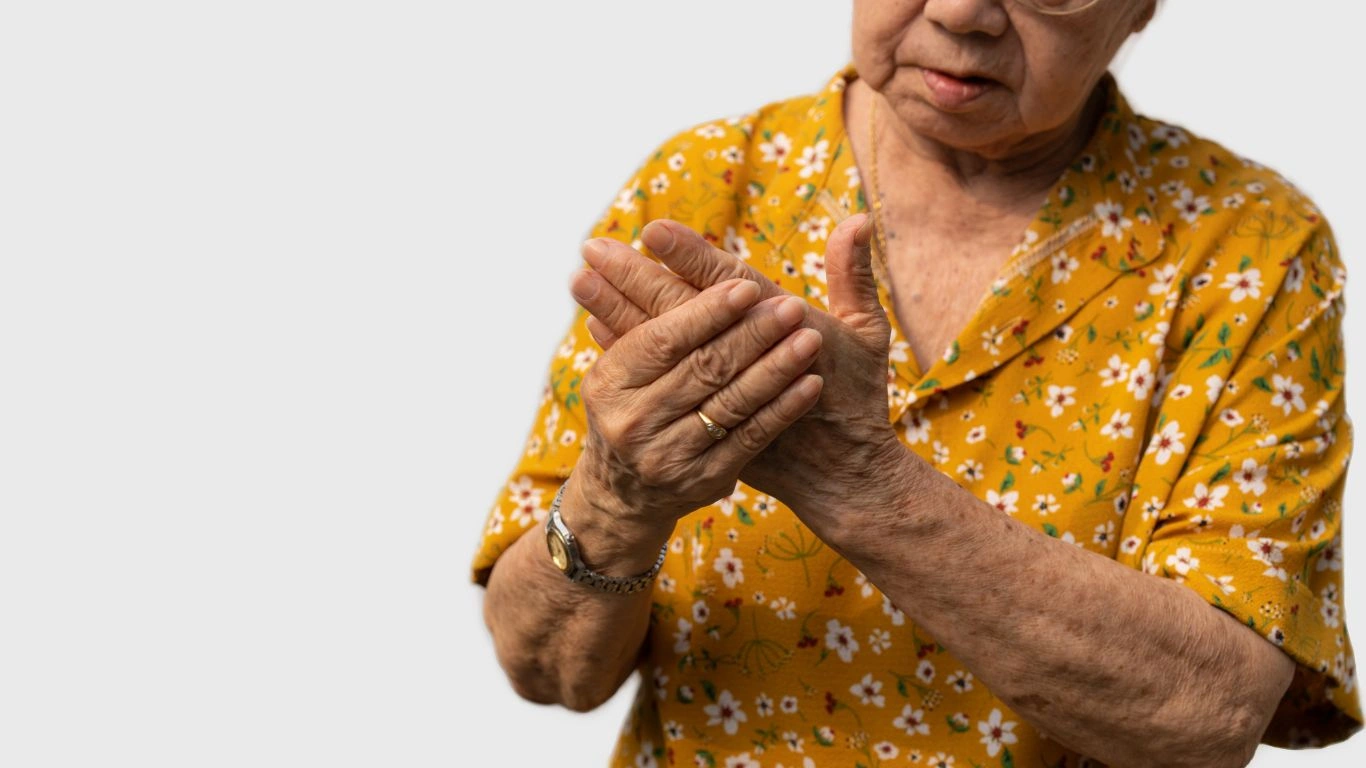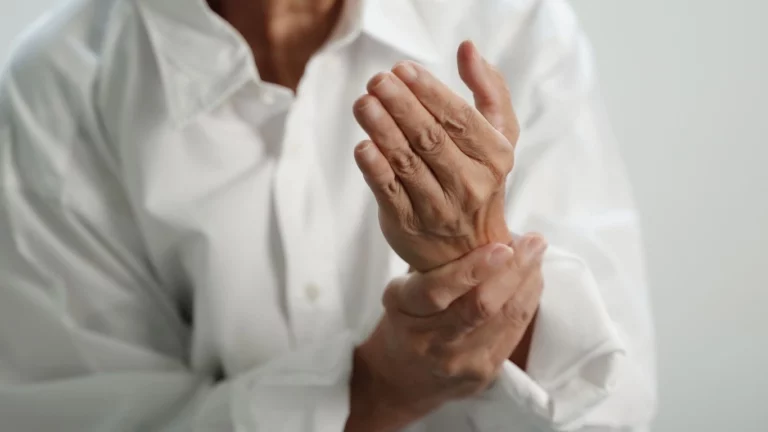Effective Treatment for Rheumatoid Arthritis: Manage Flare-Ups and Improve Quality of Life
Rheumatoid arthritis (RA) is not just another condition – it’s an autoimmune disorder that can deeply affect the lives of those living with it. As someone who’s worked in the field of diagnosing, treating, and managing rheumatoid arthritis for years, I’ve seen firsthand how RA isn’t just about joint pain. It’s a condition that plays a significant role in autoimmune flare-ups, impacting more than just the physical well-being of individuals. In this article, we’ll dive into the role of rheumatoid arthritis in triggering these flare-ups, what it means for overall health, and how to manage these episodes effectively to improve quality of life.
What Exactly is Rheumatoid Arthritis?

Rheumatoid arthritis (RA) is an autoimmune disease where the body’s immune system mistakenly attacks its own tissues, primarily the joints. This chronic inflammatory condition can lead to pain, swelling, stiffness, and, over time, joint damage. Unlike osteoarthritis, which is caused by wear and tear on the joints, RA targets the synovium—the lining of the membranes that surround the joints. The result? The affected joints become swollen, and the inflammation can spread to other parts of the body, such as the lungs, heart, and eyes. It’s a condition that can drastically affect your daily routine, leaving many to feel worn out, both physically and emotionally.
The Role of the Immune System in RA
At its core, rheumatoid arthritis is a malfunction of the immune system. The immune system’s primary job is to protect the body from harmful invaders like bacteria and viruses. But in RA, the immune system gets confused and attacks the healthy tissues in your body, especially in the joints. This leads to inflammation and damage. I’ve seen patients go through this process and it’s not always immediately apparent, but the toll it takes can be immense. The immune system, in its attempt to “fight off” a non-existent invader, ends up causing long-term damage.
Rheumatoid Arthritis and Autoimmune Flare-Ups

Rheumatoid arthritis can cause what’s known as autoimmune flare-ups. These flare-ups are periods when the symptoms of RA intensify. During a flare, the inflammation within the joints increases, making symptoms like pain, swelling, and stiffness worse. It’s almost like the body is in a constant state of attack on itself. The idea of “flare-ups” is often discussed with autoimmune diseases like RA, but what exactly triggers them? Well, there are several factors, and not all of them are fully understood. However, based on my experience working with many individuals with RA, certain patterns are apparent.
Common Triggers for RA Flare-Ups
- Stress: Emotional stress can significantly contribute to flare-ups. It’s been shown that stress can increase inflammation, making RA symptoms worse.
- Infections: Having an infection, even something minor like the flu or a cold, can trigger a flare. The immune system is already compromised with RA, and infections can add fuel to the fire.
- Weather Changes: Believe it or not, the weather plays a role in RA flare-ups. Cold, damp weather can exacerbate symptoms, leading to more stiffness and pain in the joints.
- Overexertion: Pushing your body too hard physically can also trigger flare-ups. Whether it’s intense exercise or even a busy day on your feet, overdoing it can cause your body to react negatively.
- Medications: In some cases, certain medications or changes in treatment can lead to flare-ups, especially if the body is adjusting to a new drug or dosage.
As a specialist, I always work with my patients to identify their personal flare-up triggers. It’s not the same for everyone, and it can take time to pinpoint exactly what causes those uncomfortable and painful episodes. Some people may find that their flare-ups are triggered by something as simple as a change in their diet or even an underlying emotional state. It’s all interconnected – the mind, body, and immune system.
Recognizing the Signs of a Rheumatoid Arthritis Flare

Knowing when a flare-up is on the horizon is crucial for managing rheumatoid arthritis effectively. In my experience, the signs of a flare aren’t always obvious at first, especially if someone is trying to ignore their symptoms or push through the pain. However, there are several red flags to watch out for:
- Increased Joint Pain: If your joints are hurting more than usual, especially in the morning or after a period of inactivity, it could be a sign that a flare is coming.
- Swelling: Swelling in the joints is another common indicator that the body is experiencing more inflammation than normal.
- Fatigue: RA flare-ups often come with a feeling of overwhelming tiredness. It’s not just regular fatigue, but an exhaustion that can make even simple tasks feel insurmountable.
- Stiffness: If you’re noticing that your joints are stiffer than usual, especially after resting, that could indicate a flare is imminent.
- Fever: Some people experience low-grade fevers during a flare, which is a sign of the body fighting inflammation.
Recognizing these signs early on can make a significant difference. By addressing the flare as soon as possible, you can take steps to reduce its impact and hopefully shorten its duration. In the next section, we’ll dive into practical strategies and treatments that can help manage these flare-ups.
Understanding RA Treatment Options and How They Help Prevent Flare-Ups

When it comes to managing rheumatoid arthritis (RA), it’s not a one-size-fits-all approach. Each person’s experience with RA is different, and treatment must be customized to suit their specific needs. From my experience working with RA patients, I’ve learned that it’s critical to take a proactive approach, rather than just reacting to symptoms as they arise. This means having a comprehensive treatment plan that includes medication, physical therapy, lifestyle changes, and more. But most importantly, it means working closely with your healthcare team to find the right balance.
Medications and Their Role in Managing RA
The first line of defense in treating rheumatoid arthritis often involves medications. These are crucial for managing flare-ups and slowing disease progression. In my years of treating RA, I’ve found that the best approach is a combination of disease-modifying antirheumatic drugs (DMARDs), biologics, and non-steroidal anti-inflammatory drugs (NSAIDs), depending on the severity of the condition and the individual’s response to treatments.
- DMARDs (Disease-Modifying Antirheumatic Drugs): These are essential because they target the root cause of inflammation in RA, slowing the damage to joints. Methotrexate is one of the most common DMARDs used, and many patients experience significant improvements with it.
- Biologics: If traditional DMARDs don’t work, biologic drugs can be a game-changer. They target specific molecules in the immune system responsible for inflammation, like TNF inhibitors or IL-6 inhibitors. I’ve seen many patients get a second lease on life when they switch to biologics.
- NSAIDs: While these don’t modify the disease itself, they can help manage the pain and inflammation during flare-ups. They’re often used in combination with other drugs to make the patient feel more comfortable.
As we continue to learn more about RA, newer treatments are being developed. And, with my experience, I always remind patients that while medications play a critical role, they’re only part of the equation.
Physical Therapy and Joint Protection Strategies

Physical therapy is an often overlooked but incredibly valuable part of managing rheumatoid arthritis. In my practice, I’ve seen that physical therapy can help patients not only manage flare-ups but also improve their overall quality of life. The goal is to maintain or increase mobility, strengthen muscles, and reduce the strain on joints. While medications target inflammation, physical therapy focuses on strengthening the body and reducing the stress on the joints caused by RA.
A physical therapist who specializes in rheumatoid arthritis can design a customized exercise program that incorporates both strength and flexibility exercises. Low-impact activities such as swimming or walking are fantastic for RA patients, as they help improve joint flexibility without causing further damage. Regular exercise can also help reduce fatigue, which is one of the most frustrating aspects of the condition.
Joint Protection Techniques
Another important aspect of managing RA is learning how to protect your joints. In my experience, using assistive devices and modifying your daily routines can help reduce the wear and tear on your joints. These changes might seem small, but they can make a significant difference over time. For example:
- Using special tools: There are a wide range of devices designed to reduce joint stress, from jar openers to reachers for grabbing items off high shelves.
- Splints and braces: Wearing splints or joint supports during high-risk activities can protect your joints and prevent unnecessary strain.
- Ergonomic adjustments: Modifying your workspace or home environment to make it more joint-friendly can help you feel more comfortable and avoid injury.
These protective measures may seem small in the grand scheme of treatment, but when combined with the right medication and physical therapy, they can have a major impact on preserving joint function and minimizing flare-ups.
The Impact of Mental Health on RA Management

Living with rheumatoid arthritis isn’t just physically challenging—it can also take a toll on your mental and emotional well-being. I’ve noticed over the years that managing stress and mental health is just as important as treating the physical symptoms of RA. Flare-ups and chronic pain can lead to anxiety, depression, and frustration, which in turn can worsen the symptoms of RA. It’s a vicious cycle, but it is possible to break it with the right approach.
Mindfulness and Stress Reduction
Mindfulness and stress management techniques can play a major role in reducing the frequency and intensity of RA flare-ups. Practices like yoga, meditation, and deep breathing exercises help lower cortisol levels (the stress hormone), which can, in turn, reduce inflammation. I’ve recommended mindfulness training to many of my patients, and I’ve seen the positive effects it can have on both mental health and RA management.
Seeking Support
It’s also crucial to seek emotional support when dealing with a chronic illness. Whether it’s talking to a therapist or joining a support group, having people around you who understand your struggles can make a big difference. Over the years, I’ve seen that having a strong support system helps reduce feelings of isolation and anxiety. If you’re dealing with RA, don’t hesitate to reach out to others—whether that’s through online communities or in-person groups. You’ll find that you’re not alone in this journey.
From my experience, managing RA requires a holistic approach that includes medication, physical therapy, lifestyle changes, and mental health support. It’s not always easy, but with the right tools and strategies, you can effectively manage flare-ups and live a fulfilling life despite the challenges of rheumatoid arthritis.
Healthy Lifestyle Choices to Manage RA Effectively

When it comes to managing rheumatoid arthritis (RA), your lifestyle choices matter just as much as your medication. In my years of working with RA patients, I’ve seen that making small, positive changes in your daily habits can make a world of difference in controlling flare-ups and improving overall well-being. It’s not just about popping pills—it’s about taking charge of your health and making choices that complement your treatment plan. This includes proper nutrition, exercise, and staying hydrated. Here’s how these simple but powerful habits can help keep RA under control.
Eating a RA-Friendly Diet
One of the most important lifestyle changes you can make when living with RA is adopting a healthy, anti-inflammatory diet. Over the years, I’ve seen how diet can significantly impact inflammation levels. Certain foods can either worsen inflammation or help reduce it, so paying attention to what you eat is essential. It’s not about quick fixes or fad diets—it’s about a balanced approach to nutrition that supports your body’s needs.
Incorporating foods rich in antioxidants and omega-3 fatty acids can help lower inflammation and reduce the frequency of flare-ups. Foods like:
- Fatty fish: Salmon, mackerel, and sardines are packed with omega-3s, which have been shown to fight inflammation.
- Leafy greens: Spinach, kale, and other dark greens are full of antioxidants that protect against joint damage.
- Nuts and seeds: Walnuts, chia seeds, and flaxseeds are also excellent sources of omega-3 fatty acids.
- Whole grains: Brown rice, quinoa, and oats are complex carbs that won’t spike blood sugar and contribute to inflammation.
- Fruits and vegetables: Berries, tomatoes, and bell peppers are great examples of anti-inflammatory foods to include in your diet.
On the flip side, I recommend minimizing processed foods, refined sugars, and trans fats. These can trigger or exacerbate inflammation, making your RA symptoms worse. It’s all about balance. Eating in a way that supports your body’s immune system is one of the easiest ways to feel more in control of your RA.
Staying Active: Exercise for RA Patients
Exercise is another essential component of managing rheumatoid arthritis. It may sound counterintuitive, especially when you’re dealing with joint pain and stiffness, but trust me—moving your body can be incredibly beneficial for your joints. In fact, regular physical activity can reduce inflammation, improve flexibility, and strengthen the muscles surrounding your joints, providing them with better support.
Low-impact exercises are best for RA patients. I’ve worked with patients who found immense relief through activities like:
- Swimming: Water exercise is gentle on the joints while offering a full-body workout that improves strength and mobility.
- Walking: Regular walking can help reduce stiffness and boost energy levels, plus it’s easy to do anywhere.
- Yoga: Yoga is great for improving flexibility, balance, and stress management—perfect for someone with RA.
- Cycling: Whether on a stationary bike or outdoors, cycling is another low-impact activity that helps improve joint function.
One of the key points I always emphasize to my patients is that consistency is key. Even if you can’t commit to an hour-long session, getting at least 20-30 minutes of movement a day can make a world of difference. The goal is to stay as active as possible without overexerting yourself, which could lead to injury or strain. Listen to your body and adjust accordingly.
Getting Enough Rest and Managing Fatigue
Another important piece of the puzzle when living with RA is getting enough rest. Fatigue is one of the most common and frustrating symptoms of rheumatoid arthritis. It’s not just feeling tired—it’s that overwhelming exhaustion that can affect your ability to get through daily tasks. Many of my patients have shared how frustrating it is to wake up feeling like they haven’t slept at all, despite being in bed for hours.
Getting the right kind of rest is vital for helping your body recover and recharge. Here are a few tips I recommend for managing fatigue:
- Prioritize Sleep: Aim for at least 7-9 hours of quality sleep each night. This helps your body repair itself and fight inflammation.
- Take Breaks: Don’t try to power through long days of work or household chores. Break up tasks into smaller chunks and rest when needed.
- Energy Conservation Techniques: Using tools like mobility aids or asking for help can save energy, allowing you to focus on what really matters.
Managing fatigue also involves managing stress. As mentioned earlier, stress can trigger RA flare-ups and worsen symptoms. Whether through mindfulness, deep breathing, or other relaxation techniques, reducing stress is essential for keeping both your mind and body in check.
Alternative Therapies and Complementary Treatments for RA

In addition to conventional treatments, many people with rheumatoid arthritis explore alternative therapies to help manage their symptoms. From my own experience and the experiences shared by my patients, some complementary treatments can help provide relief, though they should always be discussed with your doctor before trying them.
Acupuncture
Acupuncture is an ancient practice that involves inserting tiny needles into specific points on the body. Some studies have shown that acupuncture can reduce pain, improve circulation, and help with joint mobility in people with RA. While it’s not a cure, it can be a helpful part of your overall treatment plan.
Supplements
Supplements like turmeric, ginger, and omega-3 fatty acids have been researched for their potential anti-inflammatory properties. Again, it’s important to talk to your doctor before adding any new supplements to your routine to make sure they don’t interfere with your prescribed medications.
Massage Therapy
Massage therapy can help relieve muscle tension and improve circulation, both of which can be helpful when living with RA. It can be a soothing, natural way to alleviate pain and promote relaxation, helping you manage both the physical and emotional toll of the disease.
Herbal Remedies
Some herbal remedies like Boswellia or devil’s claw are used by people with RA to help reduce inflammation. It’s crucial to consult your doctor before trying these, as they may interact with other medications or have side effects.
While these treatments may help manage symptoms, they should not replace conventional medical treatments. The key is to find a comprehensive approach that works for you, combining both traditional and complementary therapies.
References
For further reading on rheumatoid arthritis, flare-ups, and treatment options, feel free to visit resources such as Health.com and Mayo Clinic for more information.
Disclaimer
While the information provided in this article is based on my professional experience, it is not intended as a substitute for medical advice. Please consult with your healthcare provider for personalized treatment plans and medical guidance.

Tarra Nugroho is a dedicated Nurse Practitioner with a strong foundation in family and preventive care. She brings both compassion and clinical expertise to her practice, focusing on patient-centered care and health education. As a contributor to Healthusias.com, Tarra translates medical knowledge into clear, empowering articles on topics like women’s health, chronic disease management, and lifestyle medicine. Her mission is simple: help people feel seen, heard, and informed—both in the clinic and through the content she creates. When she’s not caring for patients, Tarra enjoys weekend hikes, plant-based cooking, and curling up with a good health podcast.






